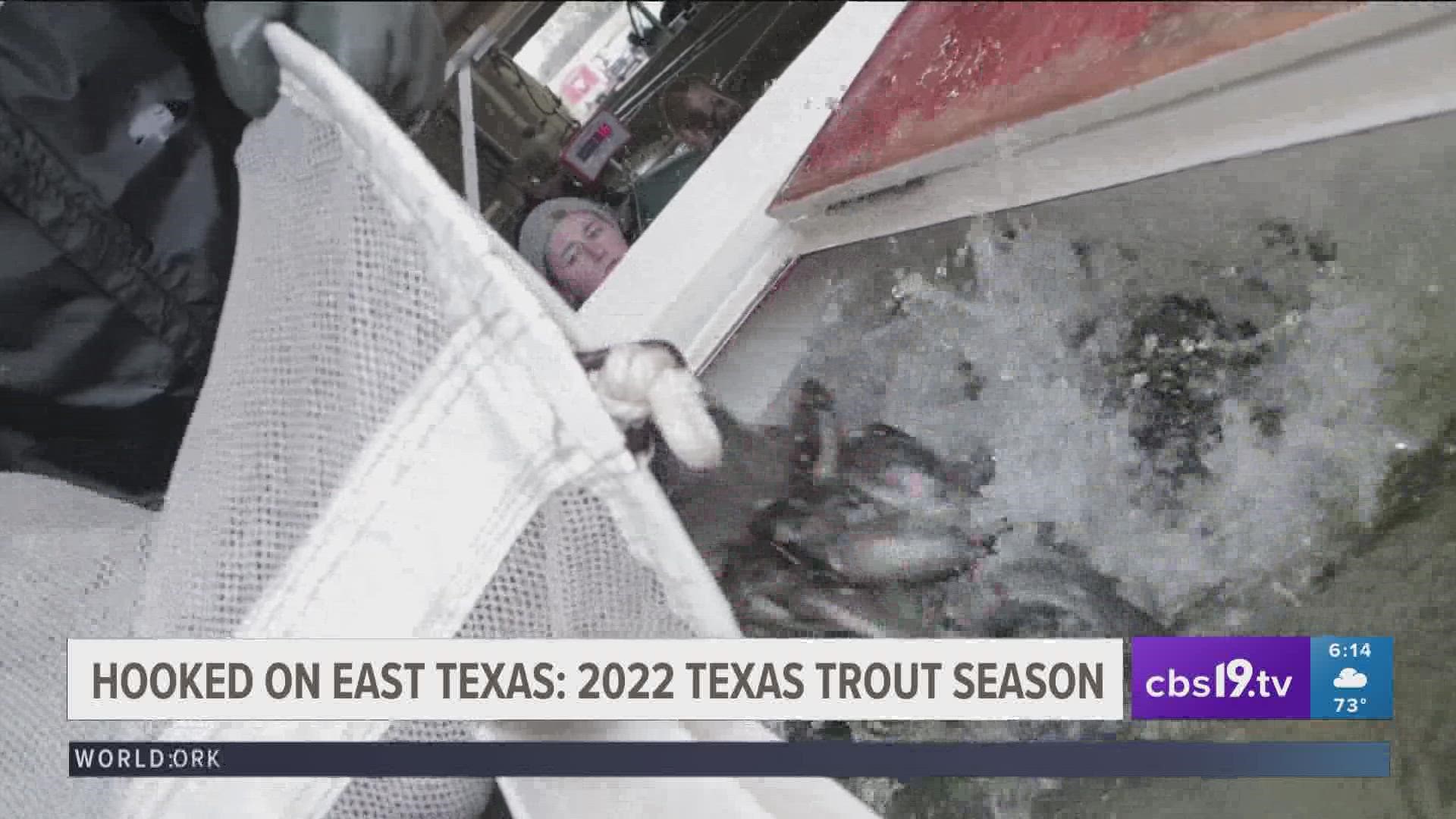TYLER, Texas — It's back! The annual tradition of trout fishing in Texas. We spent a day at the hatchery as Texas Parks and Wildlife crews got the trout ready for stocking.
Forty years and counting.
Since trout season is back, it brings a new energy to the raceway building at the Texas Freshwater Fisheries Center in Athens and biologists, such as Donovon Patterson.
“Pretty exciting times and pretty arduous if you’re a hatchery worker because it means we got four long months ahead of us with trout deliveries", Patterson said.
There’s a lot of work to do before the trout are stocked. It starts with sorting smaller trout from bigger ones. Why?
Biologist Jeremy Gillert explained it to us this way, “We have two different programs, the NFP or neighborhood fishing program. Those fish are 10 to 12 inches long and then we have our regular stockings which eight to 10 inches.”
Texas Parks and Wildlife Department is going to stock more than 300,000 of these across the state of Texas this winter.
A third of those fish will come out of the Athens hatchery. Before the first stocking, the fish are weighed, measured and then dumped into trucks used for stocking trout in Texas lakes and ponds.
Finally, the trout are released into the water. Why trout?
“Sometimes the bass and crappie are not just as much of good biters during the winter, so it’s just kind of a novelty item but it gets a lot of people out to go fishing," Gillert said.
You can tell by looking at the color on the trees this fall has been a lot cooler than last fall and because of the recent cool snap we’ve had. This means the trout will be less stressed.
“We’re glad the weather changed, and it got a lot cooler earlier in the year than it did last year because it means a lot less stress on the fish going into the water," said Patterson.
There are three species of trout, brooke, brown and rainbow. Patterson said Texas stocks rainbow trout.
“Brook and brown trout, they’re a lot more highly specialized in the lakes and rivers they belong to and it harder to bring them into Texas. But the rainbow trout are a lot heartier in a variety of different water," Patterson said.
Rainbow trout are considered a pest in other parts of the country, but not here in Texas. Most of these fish will be caught before spring. The ones that survive become food for birds and bass.
“Come spring, when it starts to warm up and the bass get hungry again, the trout get real sluggish and slow, they’ll get all get picked off one way or another," Patterson told Hooked On East Texas.
There is a daily limit of five and you can use only two poles while fishing for trout in Texas. Stockings will continue into February. Here's a link where you can find a pond of lake stocked with trout: https://tpwd.texas.gov/fishboat/fish/management/stocking/trout_stocking.phtml

